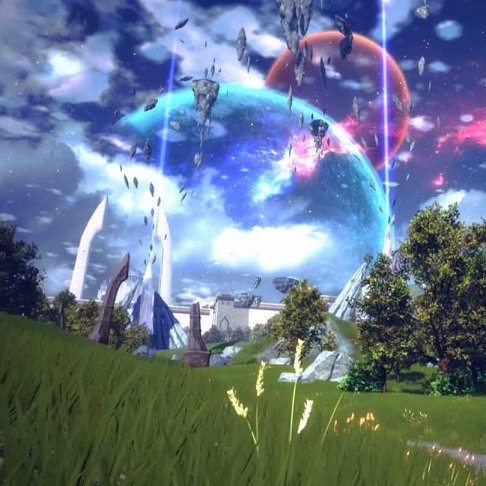

I don’t think Bing had a clue what you were asking it, but some of those are amusing.
Interests: programming, video games, anime, music composition
I used to be on kbin as [email protected] before it broke down.


I don’t think Bing had a clue what you were asking it, but some of those are amusing.


Yes. There are virus vector vaccines already in existence: https://en.wikipedia.org/wiki/Viral_vector_vaccine
For example, adenovirus vector vaccines were created for COVID-19: https://en.wikipedia.org/wiki/COVID-19_vaccine#Adenovirus_vector_vaccines
Those are non-replicating though.
Live attenuated vaccines also exist – which can replicate – but those work by using a weakened/modified version of the original harmful live virus the vaccine is intended to protect against: https://en.wikipedia.org/wiki/Attenuated_vaccine
Oral polio vaccine is a well-known example.


Back before kbin fell off the internet it had a really neat experimental “collections” feature that would let you make named groups of communities. Collections could be used either privately or made public so other people could subscribe to your curated feed on a topic. The owner could update the collection as needed (e.g. adding or removing communities/magazines as they changed over time).
It’s one of the kbin features I miss most on lemmy.
Does anyone know if mbin ever got a copy of that? I know they forked off before it was added to kbin, but I don’t know if it ever got integrated later. (I don’t see it from a quick glance at moist and fedia, but I haven’t dug into the dev history.)


the game will include over 80 DLC from the original release.
That’s a pretty important difference from what I was expecting based on the title…
I think you copied my snippet into your comment by mistake rather than whatever you found elsewhere, but regardless, happy I could help!
I’m not sure what the best way to make using it convenient is, but you could paste something like this into the JS console to rewrite all the r.php links:
(function() {
let links = [...document.getElementsByTagName("a")];
links.forEach(link => {
if(link.href.startsWith("https://skimfeed.com/r.php"))
{
let url = new URL(link.href);
let clean_link = url.searchParams.get("u");
link.href = clean_link;
}
});
})();
The basic idea of my JS snippet is that it looks for all the anchor tags (i.e. <a href='...'>), finds the ones that link to r.php, extracts the u query parameter which appears to contain the actual URL of interest, and then replaces the href attribute of the anchor (i.e. the part of the HTML that contains the destination URL) with the clean URL. That entire snippet of logic is wrapped in an anonymous function which is then immediately called so that you can just paste the snippet in more or less wherever it makes sense to trigger the logic.
Way back in the day I would’ve stuck snippets like that into GreaseMonkey scripts, but I haven’t messed with that stuff in a long time and I’m not sure which extensions are still good to use for doing that kind of thing.
Apologies in advance if my snippet is not perfectly correct; I’m not familiar with that site and wrote this off the cuff when I saw your post. Hopefully it’s helpful though.

I saw the first post a few weeks ago and I’m currently reading the story (up to chapter 82 so far) – thanks for linking it – but I’m not following along with the update threads since I want to just read through it myself first at my own pace.
I went and tracked down the specific image on danbooru since a query for the artist was linked instead, unusually, and I find the specific image links helpful. Here it is in case anyone else wants it too: https://danbooru.donmai.us/posts/1911964
The artists other works are worth checking out as well though! I recognize a bunch from songs on YouTube that I encountered a few years ago.


You can do this by configuring an HTTP server (e.g. Apache) to listen on port 80 and/or 443 (HTTP and HTTPS standard ports, respectively) and select which site to serve based on the name of the site requested. Apache documentation for this feature is here: https://httpd.apache.org/docs/2.4/vhosts/name-based.html
Note the sample config snippet showing how to set up a simple static site serving both www.example.com and other.example.com using ServerName in a VirtualHost to select between them.
You can also have Apache match a pattern in the URL and reverse proxy to another HTTP server – that can just be another program on the same computer listening on a different port, or could be on another computer entirely. See the simple reverse proxy config example on this page for a starting point: https://httpd.apache.org/docs/2.4/howto/reverse_proxy.html (Note also that you probably don’t need anything further down that page – e.g. the load balancer and failover stuff is not likely to be useful to you for a small personal project.)
Other popular HTTP servers can do this too; I just happen to have done it with Apache before.


He’s not wrong; making nicely styled anything in UI is a PITA.
with a simple menu like in Nier Automata
If you go and break down all the little things it does, it’s actually not that simple. It’s not quite as in-your-face as P5’s menus were, but there’s a bunch of little transition effects – things like the triangle dissolve when opening it and a particular typewriter text effect that types out characters with deliberately wrong letters before correcting itself. Areas changing color like progress bars – which can be interrupted and which reverse themselves nicely if the user changes tabs so that you get a transition effect without delaying the user much. An overall styling that’s reminiscent of old LCD screens – which needs to work cohesively with the rest of the game design. Subtle changes to the music when the menu is open. Special animation sequences (e.g. in ending E). Etc, etc. Individually none of them is all that hard, but putting it all together was probably still a PITA for whoever wrote it.
Best way to fix that is to join in and post something!
Otome isn’t my personal interest (my sexuality goes the other way), so I don’t have much to say myself, but I’ve seen Elevator7009 trying to build a community first on kbin.social (before that site died) and then on kbin.run (before it died) and now there and I’d like to see her efforts succeed.
If you’re not interested, feel free to ignore it, but if you’d like a place on Lemmy for discussion, there are at least a few people there who’ve been trying their damnedest to get something going.


I know; they should not be allowed to do that.


Mozilla’s non-profit status needs to be revoked.
I’m a huge fan of otome visual novels, but I don’t think it’s something that many here would appreciate lol
FYI: [email protected]


Definitely! I usually name my files starting with YYYY_MM_DD (which makes it easy to sort by the date I started making the file), a number for which entry it was on that day (1,2,3,4… plus sometimes a letter too if I want to keep multiple drafts), and a few words if I have other details I want to remember. e.g. “transcribe_song_by_artist” or things like “cont_YYYY_MM_DD-entry” when I continue working on a piece from a long time I ago. Sometimes I add a title after that too if I wanted to give the piece one.


I set up a couple profiles with different colored backgrounds so that I can easily visually distinguish terminal windows when I have several open at once. For example, I usually switch the profile to one with a red background when I ssh into a server to help avoid confusion about which system I’m running commands on. I also cranked up the font size a bit in all profiles to make it easier for me to read.


Deliberately copy snippets of a work you’re interested in as a study – e.g. transcribe it – and experiment with elements you find interesting (rhythm, chords, synths, effects, whatever) in small test pieces to make sure you understand what’s going on. Let the ideas stew for a while and then much later try to use the techniques you learned in a real piece.
That’s what I do anyway.


GoG homepage > (your name [drop down menu] when logged in) > “Games” > Click on any game in your collection > Download offline backup game installers
You can download installers for whatever systems the game supports – usually that’s just a Windows .EXE installer (+ several .bin files if the game is large). For games intended to run on Linux w/o WINE, you can select “Linux” from a drop down where it says system and it will give you an .sh file.
If you want to improve significantly, go read someone else’s code and modify it. Try to fix a bug in a program you use, add a feature you want that doesn’t exist already, or even just do something simple for the sake of proving to yourself that you can do it – like compiling it from source and figuring out how to change some small snippet of text in a message box. Even if you don’t succeed, if you put in a serious effort attempting it, you will almost certainly learn a lot from trying.
Edit: changed wording to try to be clearer
They’re from Nier: Automata.